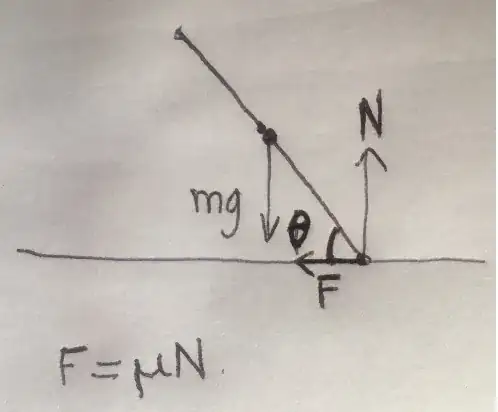I have a few question about equations of the uniform slender bar motion.
The bar is released from rest on a horizontal surface as shown in the figure and falls to the left. The surface is rough so friction forces are applied at bottom end of the bar. The coefficient of friction is μ and the mass of the bar is 'm'
First, I want to know the angle β when the end of the bottom end of the bar begins to slip. I know that if the x-axis direction force gets bigger than the static friction force it will start to slip. But I can't figure out the equation about the x-axis direction force as function of θ.
Second, I want to know the angle α when the bottom end of the bar starts to lift off the ground. This situation will happen when the normal force is zero. But I can't figure out the equation of the normal force as a function of θ.
I want to know the equation to calculate the alpha and beta.
The problems are not related, it's a different problems.
Any hints or opinion would be appreciated.

